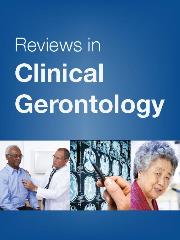Article contents
Urinary incontinence in older women: a review of conservative therapeutic interventions
Published online by Cambridge University Press: 03 January 2014
Summary
Urinary incontinence is a highly prevalent yet largely ignored condition that affects older women. Conservative treatment options are widely under-used and containment methods more widely prescribed. This study sought to review the efficacy of conservative approaches and identify which should be recommended. It was found that there is a strong evidence base in support of pelvic floor muscle and behavioural training with biofeedback as a useful adjunctive treatment. The use of therapeutic electrical stimulation was difficult to evaluate due to the different combinations of treatment available and a paucity of evidence of its use with older women. Lifestyle intervention and complementary therapies both demonstrated some positive outcomes. In conclusion it was felt that there is a place for conservative treatments in the management of urinary incontinence rather than relying on containment products. A combination of different treatment approaches is felt to be the most beneficial.
- Type
- Review Article
- Information
- Copyright
- Copyright © Cambridge University Press 2013
References
- 4
- Cited by


